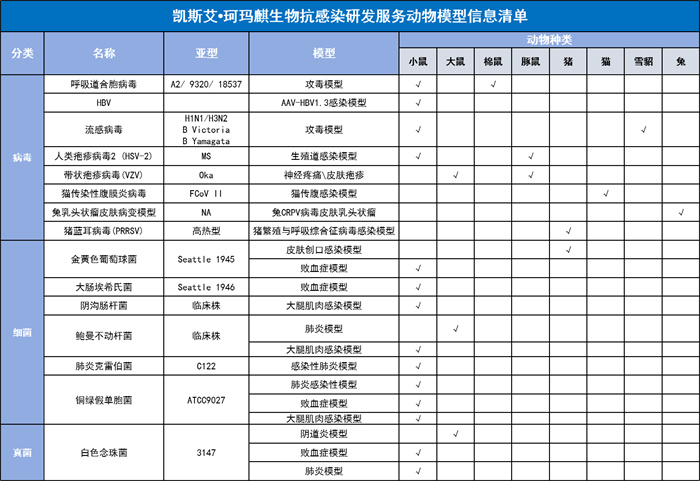What is CRPV virus
Papillomavirus (PV) is a small, non enveloped double stranded circular DNA virus that can cause proliferation of skin and mucosal epithelial cells in humans and various animals, leading to the formation of papillomas.
Virus characteristics
1. CRPV (Cottontail Rabbit Papillomavirus), also known as Cottontail Rabbit Papillomavirus, mainly infects Cottontail rabbits, but can also infect other species such as New Zealand rabbits under experimental conditions.2. The viral genome is a double stranded circular DNA, relatively small, about 8kb.
3. Viruses have strict host and tissue specificity, mainly infecting skin and mucosal epithelial cells.Pathogenic mechanism
1. After infecting host cells with CRPV virus, its genome can be integrated into the host cell genome, leading to abnormal proliferation and differentiation of the host cell and the formation of papillomas.2. The early proteins (E1, E2, E4, E5, E6, and E7) and late proteins (L1 and L2) encoded by viruses play important roles in virus replication and pathogenesis.
3. Among them, E6 and E7 proteins are considered to be the main oncogenic proteins, which can interact with the host cell tumor suppressor protein p53 and retinoblastoma protein (pRb) to promote cell proliferation and transformation.
research meaning
Oncology research model: CRPV is a good model for studying the mechanism of viral carcinogenesis. Because the nipple tumor it causes may worsen into squamous cell carcinoma. Studying the development process from nipple tumors to cancer in rabbits infected with CRPV can help scientists better understand the molecular mechanisms underlying tumor development. For example, researchers can observe the interaction between viral genes and host cell genes during this process, identifying which genes are activated or inactivated, thus providing insights for human cancer research.
Vaccine development: Research on CRPV also contributes to the development of papillomavirus vaccines. Due to its structural and functional similarities with other papillomavirus (such as human papillomavirus (HPV)), studying the development strategy of CRPV vaccines can provide ideas for optimizing HPV and other viral vaccines.The advantages of New Zealand rabbits as experimental animals
Physiological characteristics are suitable
1. New Zealand rabbits have a larger body size and are easy to operate and observe.2. Its skin is thicker and has a certain similarity to human skin, making it suitable for research on skin diseases
3. The immune system of New Zealand rabbits is relatively developed and has a certain ability to respond to viral infections, which can simulate the immune response of humans.
High repeatability of experiments
1. The genetic background of New Zealand rabbits is relatively stable, with small individual differences and high reproducibility of experimental results.2. Standardized feeding and experimental conditions can be used to control experimental variables and improve the reliability of the experiment.


Data Display
CRPV virus genome mediated back skin papilloma model in New Zealand rabbits - model construction
Experimental animal: New Zealand rabbit, maleExperimental objective: To induce a New Zealand rabbit model of dorsal skin papilloma using the CRPV virus genome
Experimental procedure: After severe back skin scratch (bleeding state) treatment, 3 days later, the scratch was inoculated with 10 μ g CRPV virus genomic plasmid to induce a skin lesion model


Histological changes of skin papilloma

Proliferation of epidermal cells in papillary tumors of the skin (Ki67 IHC staining)

empirical conclusion
1. CRPV virus genome induces a New Zealand rabbit model of dorsal skin papillomatosis. Modeling conditions: After severe scratching of the dorsal skin for 3 days, inoculation with CRPV plasmid for induction can successfully establish the model2. After about 5 weeks of induction, the skin in the back vaccination area showed obvious protruding papillary lesions, and the geometric mean diameter gradually increased
CRPV virus genome mediated back skin papilloma model in New Zealand rabbits - pharmacological experiment
Experimental animal: New Zealand rabbit, male
Experimental objective: To evaluate the inhibitory effect of the test compound on the growth of rabbit skin warts by local skin administration and exposure to lightExperimental procedure: After model establishment, treat with the test compound for 14 days and observe and detect.

Histological changes of skin papillomas after treatment

About KCI
KCI Biotech (Suzhou) Inc. and its wholly owned subsidiary Jiangsu KMQ Biotech Inc. are committed to providing comprehensive preclinical new drug research and development services to global pharmaceutical companies and research institutions, and establishing a professional and efficient drug research and development evaluation system. KCI·KMQ has two internationally advanced experimental animal facilities in Suzhou and Nantong, both of which have obtained international AAALAC certification, with a total area of over 18000 square meters; We have established a full range of experimental animal platforms including mice, hamsters, guinea pigs, rabbits, cats, dogs, pigs, ferrets, and non-human primates, over 400 animal models of tumors and non tumor diseases, ABSL-2/BSL-2 anti infective drug and vaccine evaluation experimental platforms, pathology, early toxicology, cell and molecular biology, pharmacokinetics, medical imaging, and other research service platforms.





